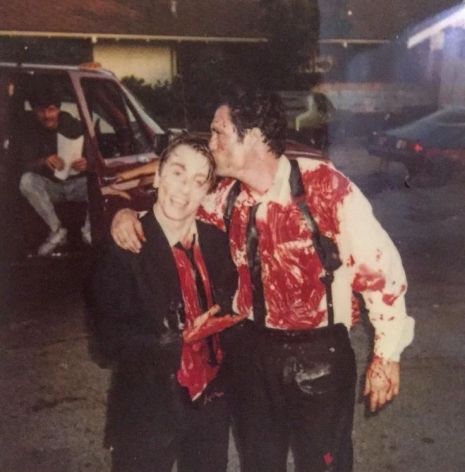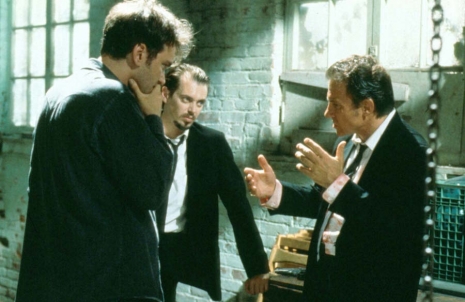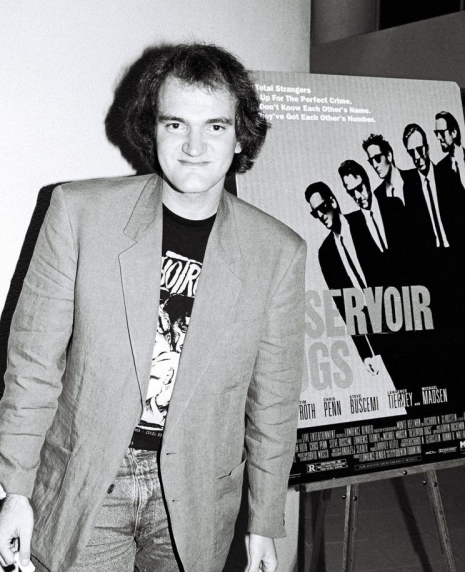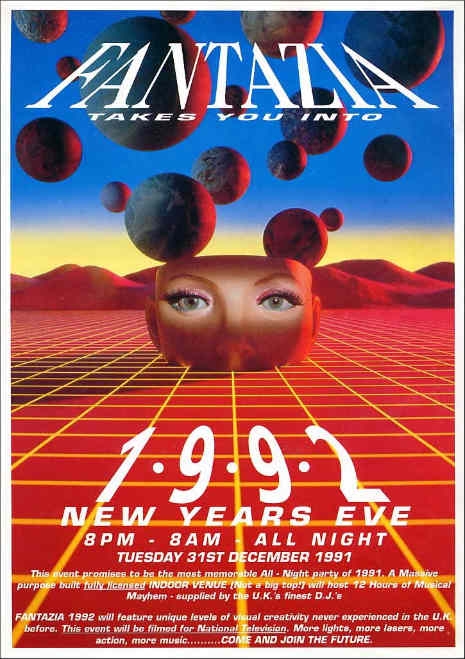
Judas Priest vocalist Rob Halford onstage with Black Sabbath (guitarist Tony Iommi is pictured to the left), November 15th, 1992.
So here’s the backstory as to how Judas Priest vocalist Rob Halford ended up fronting Black Sabbath in 1992—and man is it a doozy, mostly due to the fact that this very metal moment also involves two other pivotal members of Sabbath—original vocalist Ozzy Osbourne and Ozz’s replacement, the great Ronnie James Dio. So get out your devil horns and turn them up because here we go...
Ozzy had been riding high for a dozen years thanks to a successful solo career after getting kicked out of Sabbath for being a coke and booze-fueled mess in 1979. Then, rather suddenly in 1992, Ozz announced his retirement from touring. Osbourne said his decision to retire from the road was two-part; one was his recent diagnosis of multiple sclerosis—which turned out to later be in error. The second reason Ozzy cited is that he wanted to spend more time with his family—which turned out to be a fib as he would quickly announce after the tour he was already bored with being a homebody and jumped back into the limelight. The “No More Tours” tour concluded with two dates at the Pacific Amphitheatre in Costa Mesa, California on November 14th and 15th. Per Ozzy’s special request, the opening band would be none other than Black fucking Sabbath led at the time by Ronnie James Dio. But it didn’t go down that way. And that’s because Dio didn’t like the idea of Sabbath seeing their old mate because it might lead to a full-fledged reunion. Here’s more from RJD on his refusal to play the show which ultimately led to his decision to break up with Black Sabbath:
“No, sorry. I have more pride than that. A lot of bad things were being said from camp to camp, and it created this horrible schism. So, by them agreeing to play the shows in LA with Ozzy, that, to me, spelled out ‘reunion with Ozzy.’ And that obviously meant the end of our particular project.”
And with that, Dio closed the iron door on Sabbath leaving them without a vocalist for the gigs, so they turned to metal god Rob Halford to save them. Halford had just called it quits with Judas Priest in May blaming his exit on the band’s long-time record label Columbia and their lack of support for his desire to pursue solo work. As Dio’s departure was unexpected and quick, Halford had very little time to learn Sabbath classics such as “Mob Rules,” “Into the Void,” “Neon Knights,” and “Sweet Leaf,” but he did. The first show was all Halford ripping through a ten-song-set including a two-song encore featuring 1972’s “Supernaut.” For the tour finale the next night the crowd got what they were all wishing for—a reunion of Sabbath with all but one of the original members of the band. During the second encore, Ozzy joined Tony Iommi, Geezer Butler, and drummer Vinny Appice on stage performing four songs together; “Fairies Wear Boots,” “Black Sabbath,” “Iron Man,” and “Paranoid.” The mini-gig didn’t turn into a full-on reunion as Dio had suspected until 1997 when Ozzy, Iommi, and Butler (along with Faith No More timekeeper Mike Bordin on drums who replaced Bill Ward due to health problems) headlined Ozzfest along with Ozzy’s touring band. Halford would once again sit in on vocals for Sabbath on August 26th, 2004 when Ozzy got bronchitis and wasn’t able to perform—something that Halford considered a birthday gift of sorts as the day prior he had just celebrated his 53rd year around the sun. Awww.
I’ve posted eighteen minutes of footage of Halford killing it with Sabbath on November 15th, 1992 as well as a few photos from the blessed event after the jump…










